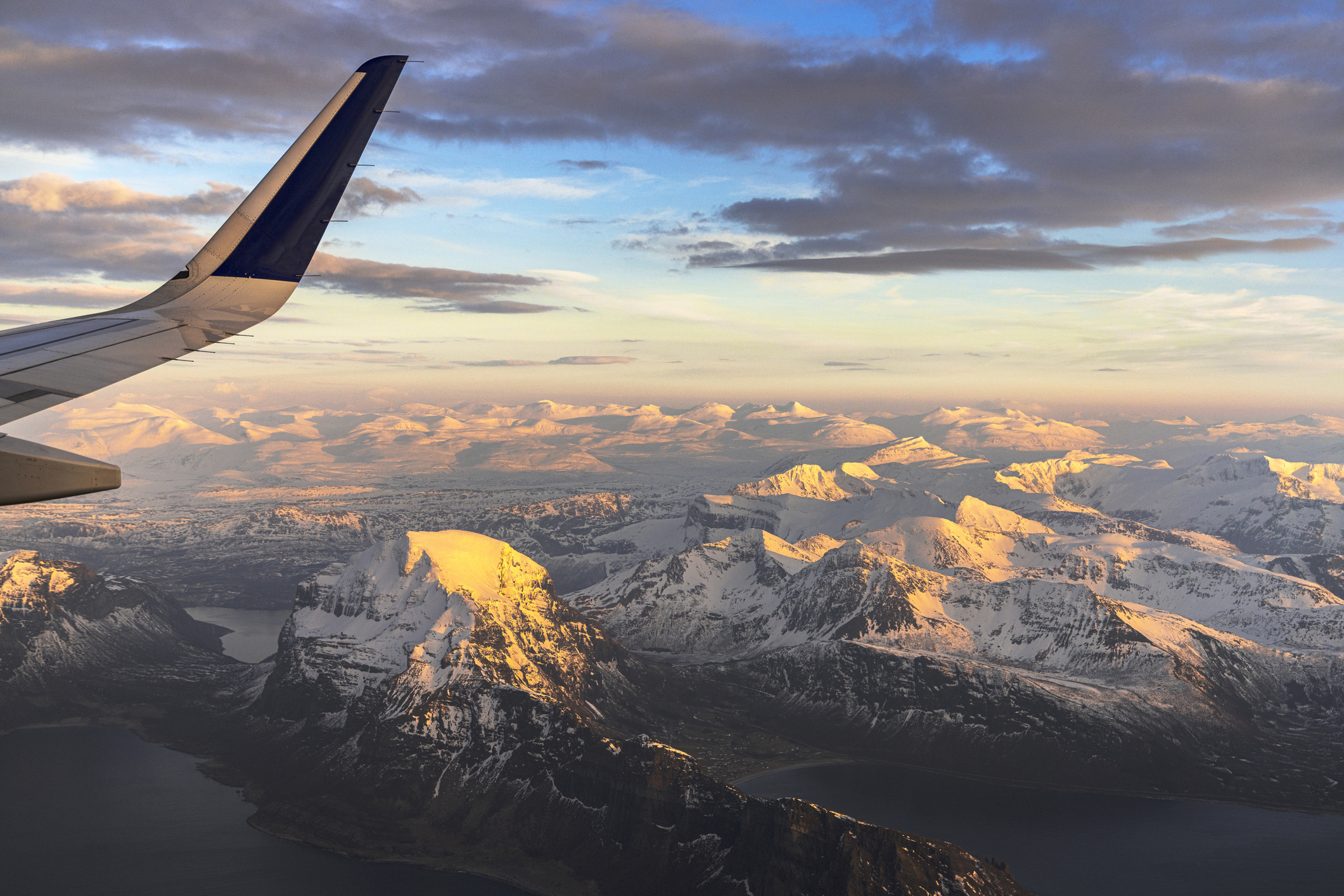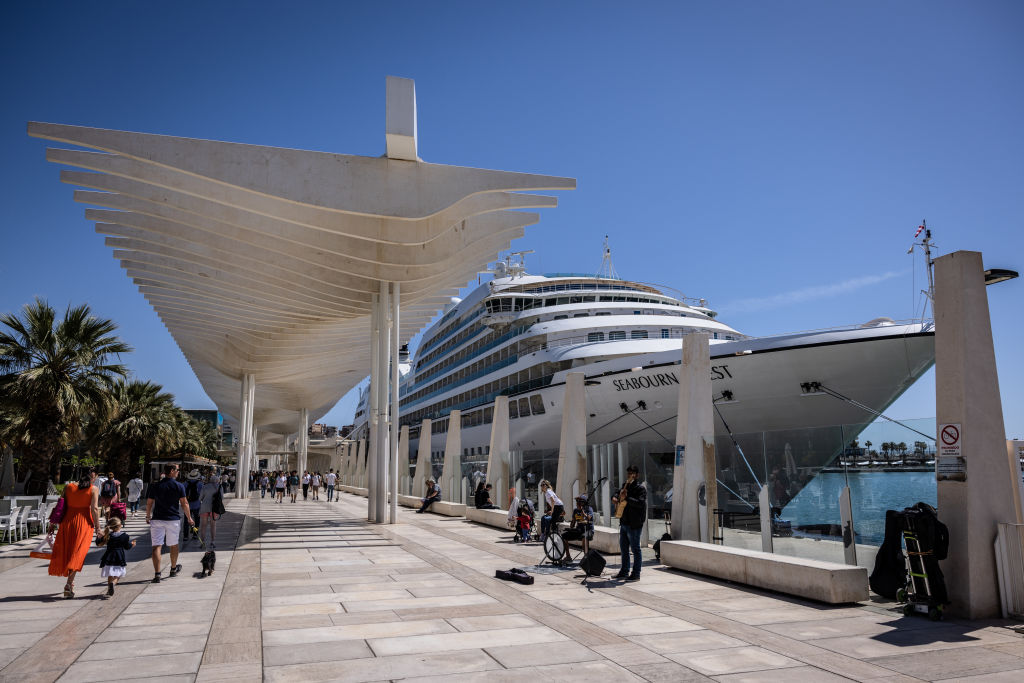Traveling With Tots: A Survival Guide
Whether flying or driving with a young one, a little preparation can go a long way toward saving you money -- and keeping your cool.

Editor's note: This story was updated in November 2009.
About 300 miles into an 800-mile road trip to Florida one summer, I decided to tell my 3-year-old daughter -- in a daze from watching hours of Dora the Explorer -- it was time to turn off the DVD and try to sleep. That's when the meltdown began.
It was 11 p.m., we'd been in the car seven hours (thanks to unexpected traffic jams and numerous pit stops) and we still had about 100 miles to go to the town where we had reserved a hotel room.
From just $107.88 $24.99 for Kiplinger Personal Finance
Become a smarter, better informed investor. Subscribe from just $107.88 $24.99, plus get up to 4 Special Issues

Sign up for Kiplinger’s Free Newsletters
Profit and prosper with the best of expert advice on investing, taxes, retirement, personal finance and more - straight to your e-mail.
Profit and prosper with the best of expert advice - straight to your e-mail.
But the 3-year-old's crying woke up the 1-year-old, and there was no choice but to stop. We drove from hotel to hotel until we finally found one with a vacant room -- a honeymoon suite with a king-size bed. On the bright side, the in-room hot tub and glow-in-the-dark planets on the ceiling were a big hit with my toddler.
Maybe you've been there, too -- not the cheesy hotel, but in a car or plane with small children, clinging to the last threads of your sanity. And you shudder at the thought of going through it again this holiday travel season. Or maybe you're planning to travel with baby for the first time this year and you're lying awake at night in terror at the thought.
Preparation is key
Your first step is to relax! If you're stressed, the kids will pick up on it and things will only go downhill. As a mother of two, I'll admit that no amount of planning can prevent every mishap or meltdown. But you can minimize the damage -- and even save money -- if you are properly prepared. So here's an early gift from me to you: Ten things I've learned from traveling with small children.
1. Know the rules. Yes, you can take infant formula, breast milk, juice, canned, jarred, or processed baby food in your carry-on baggage and aboard your plane. The Transportation Security Administration lets you exceed the 3-ounce limit for these items as long as you declare you have them at the security check.
Just make sure all these items fit in your carry-on bag if your child is flying for free in your lap. Your kids aren't entitled to the standard carry-on allowance unless they have a ticket. On the plus side, car seats and strollers won't count toward the two-checked-bags limit. You're better off hanging on to those items, though, and checking them at the gate.
And be sure to have some sort of ID -- birth certificate or passport -- for your child. You might be asked for it at check-in.
2. Research, research, research. You are going into a war zone. You better know the terrain. For long-distance drives, use the Internet to find fun spots for your kids -- such as children's museums, petting zoos -- along the way. They need more than just a 10-minute pit stop to work off pent-up energy. Also find out which cities along your route have restaurants with play areas. And go online to chart your route's rest areas, which usually offer better changing facilities than questionable gas stations.
If you're flying, check the airport's Web site for a map of the building so you know where the family restrooms are and if there is a play area for kids.
And find out whether the airline will give you a loaner car seat if you check yours in and it doesn't make it to your destination. Many airlines will provide you one for free -- and deliver your car seat once it's located.
3. Don't pre-board -- team board. The airlines think they're doing you a favor by letting you jump the line with your small children. But you're just being forced to spend even more time trying to keep a squirming child calm in a seat.
So if there are two adults in your party, send one in first with the carry-on bags to secure a spot for them in the overhead bins. The other can hang back, run around with the kids then corral them into the plane after everyone has boarded.
4. On long flights, buy the baby a seat. You'll save a couple hundred dollars by holding a child younger than 2 on your lap. But if you can afford it, buy the extra ticket and put your child in a car seat to save your sanity on flights more than two hours. Make sure your car seat has printed on it: "This restraint is certified for use in motor vehicles and aircraft." If not, you might have to check it in as baggage, cautions the Federal Aviation Administration. Booster seats are not allowed.
5. Come prepared ... for anything. Never pack your child's favorite teddy bear or security blanket in checked luggage. Make sure you have at least one change of clothes for your kid in your carry-on bag or easily accessible in the car. You also might want to take along an extra shirt for yourself, too (as my husband learned when our daughter so kindly shared the effects of her motion sickness on him).
If your child relies on a pacifier, have several on hand to pop in junior's mouth when he tosses one on the ground. And if you're flying, be sure to have something for your little one to suck on (bottle, sippy cup) during take-off and landing so her ears won't hurt.
6. Provide plenty of entertainment options. My parents used to fill a bag with cheap toys to keep us entertained on long trips -- and I looked forward to traveling for that reason. Hit the dollar store and load up on cheap children's books, finger puppets and age-appropriate games. Some other entertainment options: Leap Frog's LeapPad, Crayola's Color Explosion paper and pen, Magna-Doodle, sticker books and, oddly enough, calculators or anything with buttons.
Snacks are another way to keep your little ones occupied. But once they've tired of the food and toys, it's time to bring out the big guns -- the portable DVD player. Every parent I know says these are a must-have for long trips. You can rent them but don't bother. It'll cost you about as much as buying one (starting at $80).
If your kids are big enough for headphones, get them so you don't have to spend hours listening to "super cool explorer Dora!" And don't forget the cables that come with your DVD player so you can port it to the TV at your destination in case all Grandma has is a VCR and an old worn out copy of Field of Dreams.
Don't want to lug your entire DVD collection with you? Check out the public library where you're going. Some will loan to out-of-staters, or borrow your relative's card. It's probably not a good idea to pack stuff from your own local library, though. If you lose that book, movie or CD on your trip you'll have to pay for it.
7. Pack all the gear you need. Traveling with kids means taking lots of stuff. But it's better to take everything your little one needs rather than rely on what might or might not be available at your destination. You don't want to blow your vacation budget buying something at the last minute that you already have at home.
Take your own portable crib or playpen ($50 and up) -- it'll be familiar to the child and clean. (Don't forget a change of sheets.) Also consider a portable high chair (about $25). Your friends and family might not have one, and who wants to spend their holiday meal holding little ones in their laps? It probably isn't necessary to pack a week's worth of diapers, though. Every-day items can be purchased when you arrive.
8. Little things count. I have one word for you: lollipops. They're cheap, sweet, and they plug the hole. Also, an inexpensive car sun shade ($10 to $15) can go a long way toward keeping your kids comfortable during long rides.
Who wants to listen to hours of The Wiggles' greatest hits in the car? Spare yourselves by taking CDs of songs both you and your children can enjoy. Or make a cassette tape of yourself reading Junior's favorite books so you don't have to spend 250 miles twisted around in your seat.
For air travel, use backpacks for carry-ons so your hands will be free to hang on to your kids. And if you're going to be lugging a car seat through a terminal, consider buying fold-out travel cart ($20 to $30 on Shopping.com to haul this bulky item and free up one hand.
9. Help baby feel at home. Trying to get your kids to sleep in a strange location is tough. Add a touch of jet-lag and it can be downright impossible. Get a leg up on jet-lag by adjusting your little one's sleeping schedule slowly the week before you travel. For example, shift bedtimes and nap times by 15 minutes on Monday, then 30 minutes on Tuesday, and so on.
And bear in mind that several days of holiday festivities and dozens of cheek-pinching family members can overstimulate your child. Make sure you watch for your child's cues that he needs a breather. Plan some quiet moments into your day for just the two of you.
10. Finally, don't push the limits. Whether you're driving or flying, remember your little ones just can't hack it the way you can. So if you're flying, don't schedule a flight around your child's nap time or bedtime. It might seem like a good idea, but you can't count on them to fall asleep on a noisy plane full of distractions. You'll end up with a very cranky kid on your hands.
Don't expect your toddler or infant to tolerate a 12-hour road trip. Break up the trip into reasonable stretches and be sure to book a hotel room so you won't have to spend another hour driving around trying to find a room. If a meltdown prevents you from making it to the hotel where your reservation is, you might avoid paying for the night if you tell the manager your situation. (We did).
Profit and prosper with the best of Kiplinger's advice on investing, taxes, retirement, personal finance and much more. Delivered daily. Enter your email in the box and click Sign Me Up.

Award-winning journalist, speaker, family finance expert, and author of Mom and Dad, We Need to Talk.
Cameron Huddleston wrote the daily "Kip Tips" column for Kiplinger.com. She joined Kiplinger in 2001 after graduating from American University with an MA in economic journalism.
-
 Forget Financial Forecasts: Focus on These 3 Goals for Success
Forget Financial Forecasts: Focus on These 3 Goals for SuccessWe know the economy is unpredictable and markets will do what they do, no matter who predicts what. Here's how to focus on what you can control.
-
 Why In-Person Financial Guidance Remains the Gold Standard
Why In-Person Financial Guidance Remains the Gold StandardFace-to-face conversations between advisers and clients provide the human touch that encourages accountability and a real connection.
-
 How You Can Turn Your Home Equity Into a Retirement Buffer
How You Can Turn Your Home Equity Into a Retirement BufferIf you're one of the many homeowners who has the bulk of your net worth tied up in your home equity, you might consider using that equity as a planning tool.
-
 9 Types of Insurance You Probably Don't Need
9 Types of Insurance You Probably Don't NeedFinancial Planning If you're paying for these types of insurance, you may be wasting your money. Here's what you need to know.
-
 Why It's Worth Booking a Winter Vacation
Why It's Worth Booking a Winter VacationTravel Smart In the early months of the year, travel demand dips — and so do prices.
-
 5 Ways to Save on a Trip to the 2026 Olympics in Italy
5 Ways to Save on a Trip to the 2026 Olympics in ItalyA guide to going to the Milan-Cortina 2026 Winter Olympics without breaking the bank.
-
 The Best (and Worst) Airlines for Flight Delays and Cancellations
The Best (and Worst) Airlines for Flight Delays and CancellationsWhich airlines should you book and which should you avoid if you want to make it to your destination on time?
-
 Four Luxury Spa Resorts for Well-Heeled Travelers
Four Luxury Spa Resorts for Well-Heeled TravelersWe hand-picked these U.S. luxury spa resorts for their serenity, amenities and dedication to the comfort of older travelers.
-
 Child-Free Cruises Perfect For Your Retirement Celebration
Child-Free Cruises Perfect For Your Retirement CelebrationHow to find a bespoke ocean or river vacation for adults. Many of these options are smaller, charming river cruises, expeditions, or niche experiences.
-
 Noctourism: The New Travel Trend For Your Next Trip
Noctourism: The New Travel Trend For Your Next Trip"Noctourism" is a new trend of building travel and vacations around events and plans that take place at night. Take a look at some inspiring noctourism ideas.
-
 My Husband and I Retired at 67 With $3.2 Million, But He's Frugal About Travel. How Can I Convince Him to Loosen Up?
My Husband and I Retired at 67 With $3.2 Million, But He's Frugal About Travel. How Can I Convince Him to Loosen Up?We asked financial planning experts for advice.